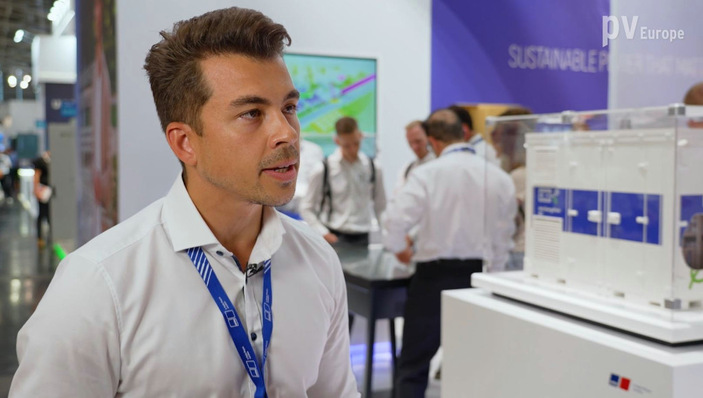Life on an island can be enticing. All the more so, when alongside beach fun a secure power supply is guaranteed. Until now, that has not always been the case on the small Cyclades island of Kythnos in the Greek Aegean Sea. So in June 2019, in the context of the European WiseGRID project five VARTA pulse neo systems from the newest energy storage generation were installed in public buildings to stabilise the island grid.
First installation of VARTA energy storage systems in Greece
Kythnos town hall, the community centre, a medical centre and the harbour offices in two yacht harbours have been equipped. Simultaneously, it is the first ever installation of VARTA energy storage systems in Greece. However, the local project partners initially had reserves due to safety concerns since lithium-ion batteries are not as widespread or as popular everywhere in the EU as they are in Germany or Italy. “The name VARTA and the trusting relationship within the project were ultimately able to persuade those responsible that our systems do not pose a danger,” explains Bengt Stahlschmidt, new General Manager Energy Storage Systems at VARTA Storage.
Challenge of fluctuating voltage and grid frequency
Grid frequency and voltage fluctuate on the island within a much bigger range than on the mainland. Therefore, on Kythnos the frequency range to be expected extends from 42.5 to 57.5 hertz. One of the tasks of the storage systems is to reduce these fluctuations. As the first step, VARTA Storage had to configure the five pulse neo energy storage systems for the special requirements of the small island so that it was at all possible to use them there. They were furnished with an additional communication software, which establishes communication to a central control system (StaaS-VPP), which was also implemented in the context of the project by VARTA Storage and other project partners. “Together we have found a configuration with which the storage systems function stably. You could call it an ‘island grid configuration with extended frequency tolerance’,” explains Bengt Stahlschmidt.

Actively shaping the energy future of Europe – the VARTA Group not only follows this maxim with its own research and development department but also through participation in research projects like WiseGRID. The project aims to develop new added-value services and consumer-orientated services for intelligent grids in Europe, to increase the total share of renewable energies in the European energy mix and to accelerate the use of electromobility in Europe. That is to be demonstrated with four pilot projects in Spain, Italy, Belgium and Greece. The project is financed with funds from the European Union “Horizon 2020” research and innovation programme.
Virtual power plant
To achieve these aims the use of energy storage systems, a higher share of green energy sources and the provision of a charging infrastructure are necessary. “Above all, software poses one of the biggest challenges in bringing together local generators and storage systems in a virtual power plant. Optimal operation of the local distribution energy storage systems must be guaranteed by intelligent forecast and control algorithms,” emphasises Bengt Stahlschmidt. The storage specialists do not only contribute their expertise in regard to the optimal manner of operation for energy storage systems but they also take on the coordination of the partners participating in the project. In order to test the developed tools also in realistic conditions, the VARTA energy storage systems are deployed in various regions, such as on Kythnos, and are operated in the context of the VPP.
In the context of WiseGRID VARTA undertook an installation similar to that on Kythnos in Belgium to stabilise the power distribution grid there. WiseGRID began in 2016 and is considered to be a European flagship initiative in the field of smart grids, renewable energies and electromobility. The project coordinated by GRUPOETRA was developed by 21 partners in Spain, Belgium, France, Italy, Germany, Greece, Romania and the United Kingdom. (HCN)
Stay informed, get our free newsletter twice a week. Register here







